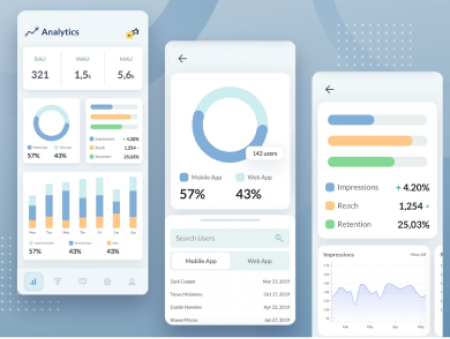Selling products through a mobile app is an excellent way to reach more customers and increase sales. However, merely having a mobile app is not enough. To ensure long-term success, it is important to understand how users interact with the app and make data-driven decisions. This is where app analytics becomes a game-changer for business owners.
What is App Analytics?
App analytics is the process of tracking and analyzing user behavior within a mobile app. It provides business owners with key data such as how often users open the app, which features they use the most, and where they drop off. By understanding this data, business owners can optimize the app experience to drive better results.

Benefits of App Analytics for Mobile App-Based Businesses
-
Enhanced User Experience App analytics helps business owners understand how users are interacting with their app. By identifying friction points, business owners can improve the app's user interface and make navigation more seamless, ensuring that users have a smooth experience. This leads to higher user satisfaction, which is essential for repeat purchases and long-term loyalty.
-
Increased Conversion Rates Analytics reveal useful insights into the user journey, such as where users drop off during the purchasing process. This data allows businesses to address specific issues and optimize checkout flows, product pages, or onboarding experiences, ultimately increasing conversion rates.
-
Targeted Marketing Efforts App analytics provide insights into user demographics, preferences, and behaviors, which enables more targeted marketing campaigns. Business owners can use this information to segment their user base and deliver personalized content, offers, and promotions that are more likely to convert.
-
Real-Time Insights for Quick Decisions Real-time analytics allow business owners to track performance metrics instantly. This enables quick decision-making, allowing businesses to address problems such as high cart abandonment rates, app crashes, or slow load times before they negatively impact sales.
-
Optimized In-App Promotions App analytics provide information on which in-app promotions and offers are most effective. With this data, businesses can fine-tune their promotions to ensure they are reaching the right audience at the right time, leading to increased sales and user engagement.
-
Better Retention Rates Through app analytics, business owners can track retention rates and user behavior over time. By understanding when and why users leave the app, business owners can implement strategies to retain customers, such as offering loyalty programs or personalized incentives.
-
Data-Driven Decision Making Data from app analytics takes the guesswork out of decision-making. Business owners can rely on hard data to guide their strategies, whether it’s launching a new feature, optimizing the app, or deciding when to run promotions. This reduces the risk of costly mistakes and helps in making more informed business decisions.
Key Metrics to Track in App Analytics
- User Retention Rate: Measures how well your app retains users over a period.
- Lifetime Value (LTV): Estimates the total revenue a business can expect from a user over their lifetime.
- Conversion Rate: Tracks how many users are completing the desired actions, such as making a purchase or signing up.
- Session Duration: Measures how long users are spending on the app during each visit.
- Churn Rate: Tracks the percentage of users who stop using the app after a certain period.
Conclusion
For business owners selling through a mobile app, app analytics is an essential tool for improving the user experience, increasing sales, and driving business growth. By utilizing the power of data, businesses can make informed decisions that lead to higher conversion rates, better customer retention, and a stronger competitive edge in the market.
